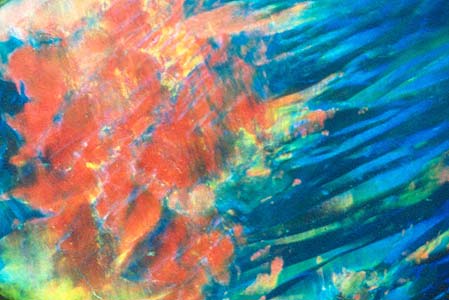
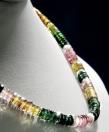


Opal & Tourmaline
You have received this newsletter because you opted after a past purchase, but should you wish to be taken off the mailing list, just click the link at the bottom. This month’s theme is opal and tourmaline, the gemstones for October. Scroll down, or click one of the links below on the html version to go to a certain section. If you have any suggestions for the future, please e-mail me at suggestions@mrbead.com.
If you
weren't mailed this newsletter enter your e-mail address
here to receive next month's
newsletter.
How does Opal Effect You?
Looking after Opal
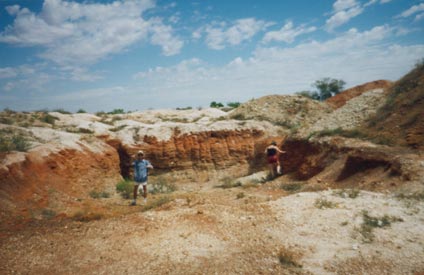


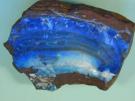
What is Opal?
All of Nature’s fury can be seen in fine opal. Like a Rembrandt: fire,
lightning, all the colors of the rainbow and the shine of far seas. Australia
supplies about 95% of the world’s opal from the outback. Aborigines there
believe their creator came down to Earth on a rainbow to bring the message of
peace to all humans. And at the spot where his foot touched the ground, opal was
born.
The name Opal could have came from many places. In Greek “opallios”, translates
as “color change”, and to the ancient Romans “opalus”, was a stone from several
elements. Pliny, a Roman author, wrote that opal combines the sparkle of
Almandine, the shining purple of Amethyst, the golden yellow of Topaz, and the
deep blue of Sapphire. return to top
Types of Opal




Fine opals shine and sparkle in a continually changing play of colors called “opalising”.
Depending on the rock and location they have names like Harlequin, Peacock,
Mexican, and Fire Opal. Most opal has this play of colors except “Common Opal”,
a name give to all others, like Pink Opal. Because demand outstrips supply, fine
opalizing opal is very very expensive, so is sold in individual beads for
hundreds of US dollars each. Therefore, the type of opal common in necklaces is
non-opalizing opal – usually pink opal from Peru.
Opal’s fantasy-like play of color is caused by small spheres of silica creating
interference and refraction manifestations. The spheres, which are arranged in
compact structures, dissect light through the gemstone, turning it into the
rainbow effect, always new and different. return to top
How to Value Opal




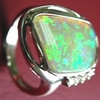
The most important criterion for determining the price of fine opal is the play
of color, the colors themselves and their pattern. If red appears when looking
through the stone, all the other colors will also. Value also depends on body
color, transparency, and original location. Body color can be black, dark or
light, or colored. Black Opal or a dark grey body has the most brilliant play of
color. Black Opal from Lightning Ridge or Mexican Fire Opal is the best. Crystal
opal, is the next best, and should be more transparent with a deep play of
color. White or milky opals show more diffuse color and are the cheapest.
To best bring out the play of color in a fine opal, the stones are cut and
polished to round or oval cabochons, or any other softly domed shape. Only the
best qualities of Fire Opal are suited to faceting. The opal cutter removes any
impurities using a diamond cutting wheel, before working out the rough basic
shape, fine cutting, and finishing with sandpaper and polishing with a wet
leather wheel.
How does Opal Effect You?
Opal is thought to solve depression and to help its wearer find true love. Opals
are supposed to enhance the positive characteristics for people born under the
sign of Cancer. With Black Opal recommended to Scorpios and Boulder Opal for
Aries. The opalizing effect reflects changing emotions and moods of people.
People prefer different opals for different moods. Opals are like human
emotions: each type creates different feelings.
return to top
Looking after Opal
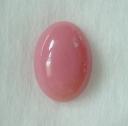


Due to 2 to 6% water, opals easily become brittle and if stored too dry or
exposed to heat over a longer period of time, they will show fissures and the
play of color will fade. Therefore, Opal jewelry should be worn as often as
possible, for then the gemstone will receive the needed humidity from the air
and from the skin of its wearer. In earlier days opal’s sensitive surface was
oiled, but today they are sealed with clear resin.
To buy our Pink Peruvian Opal Nugget Beads click
here
return to top
Tourmaline

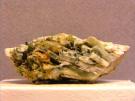


Tourmalines are precious stones with a unique splendor of colors and fascinating
properties. Ancient Egyptians believed tourmaline collected the colors of the
rainbow on its way from heaven to earth. For thousands of years tourmaline has
been attributed with magical powers, and thought to bring permanence and
stability to love and friendship.
"Tourmaline” comes from the Singhalese expression "tura mali”: stone of mixed
colors. Tourmalines are usually dark red and green, but also range from black,
blue to yellow, usually showing two or more colors. Some tourmalines change
color from daylight to artificial light, and each tourmaline will look different
to another. Tourmalines are mined everywhere, but especially in Brazil, Sri
Lanka and South Africa. The "Ashes-Extractor"
The multi-colors come from mixed crystals of complex aluminum-borosilicate. The
slightest changes in composition will result in completely different colors.
Depending on the angle of view the color will be different or at least show
different intensity. The deepest color always appears along the main axis, so
skilled gem cutting is important. Tourmaline is excellently suited for
wearing and being quite hard is easy to care for.
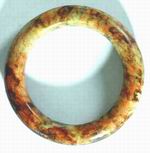
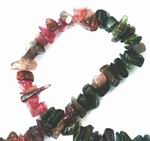
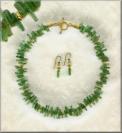
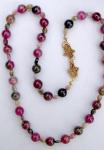
Deep red Tourmaline is named "Rubellite”, provided it shows the same ruby-red
shade in daylight and in artificial light. Should the color change with the
light source, the stone is called a "Pink Tourmaline”. Blue Tourmalines are
called "Indigolith”, "Dravite” is a golden-brown to dark brown Tourmaline, and
black Tourmalines are known as "Schorl”. The latter used for engravings because
it is reputed to ward off harmful radiation from its wearer. Paraiba Tourmaline
from Brazil is considered the best, with a vivid deep blue to bluish green. return to top
Tourmaline's Strange Effects
Not only are designers inspired by tourmaline’s wealth of colors, but scientists are also intrigued by its astonishing physical characteristics to produce pyro-electricity. By heating and subsequently cooling down, tourmalines can be “charged up” to show positive charge at one end, and negative at the opposite pole. Pressure will also charge the stone, and while discharging the plus and minus-poles will alternate, so that the stone will show vibrations similar to Rock Crystal, but much stronger. Years ago, the Dutch brought Tourmaline to Europe because of this effect, using heated tourmalines to extract the ashes from their clay pipes and naming the gemstone "Aschetrekker”.
To buy our tourmaline chip beads click here
Chips are a fun and inexpensive way to make jewelry. There is also a very wide range of bead chips available that are ideal for simple bracelets, necklaces or earrings. Bracelets can be quickly made by using elastic string allowing for expansion so they will fit all wrists. Or chips can easily be threaded on thin bangle wire for a more steady effect. These pictures will give you an idea what can be done with these fun-shaped beads.
Chips are sold in much longer strands than other types of beads - usually at least 32-inches long, so if you only want them for bracelets, you don't need so many strands. They will also be the cheapest way of purchasing the stone - so allowing those on a budget to use semi-precious stones they could not otherwise afford. Ships come in all sorts of sizes and shapes. Some like the coral chips on the top right above, are made from very fine hairpins - while others like the carnelian beads on the left of these, are small chunks. Being natural, almost all have irregular size and shape within the strand, and the size quoted is usually the "largest average" on the strand. If you plan on using a strand of chips to make a necklace, you will need to restring them - although they come quite long, this is really only a temporary hold and comes without any hook or clasp. It's a good idea to use a tray or table when working with chips as their tiny size make them easy to loose when take off the strand. Have fun! return to top

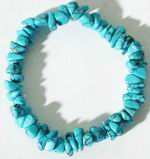






Next month there will be a piece about selling beads on eBay
Special 10% Offer !
Sample our beads with 10% discount in our MrBead bead store, just key in "september" at the checkout (without the
inverted commas) and click "Redeem Coupon".
Offer valid until the end of September only - so act now! Only for use in our store at the checkout and not valid with any other offers.
To see all our chip beads for sale click here
To go to our MrBead store click
http://www.mrbead.com
To return to the top of this page click here